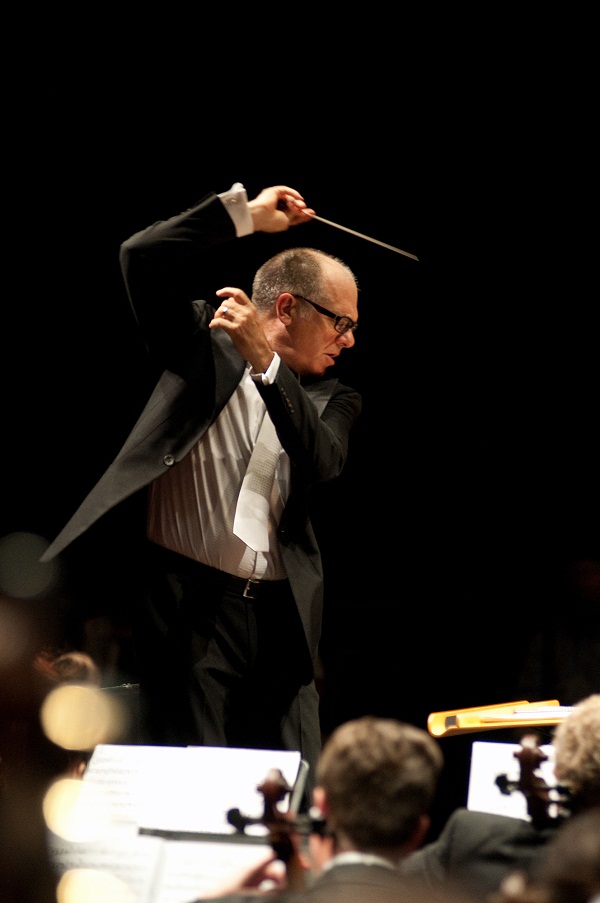Steven Schick Leads Stirring, Probing Account of Bernstein’s “Kaddish” Symphony with La Jolla Symphony
After a rugged and stirring performance of Leonard Bernstein’s Symphony No. 3 “Kaddish” by the La Jolla Symphony and Chorus Saturday, March 16, I left UC San Diego’s Mandeville Auditorium refreshed and uplifted. Bernstein’s “Kaddish” Symphony, based on the ancient Hebrew prayer for the dead, takes the listener on a probing and at times exalting journey. But sitting down to review the welter of critical opprobrium the work has generated since its premiere in 1963—including the composer’s own misgivings and revisions—has moderately deflated my initial elation.

Steven Schick [photo (c) Tom Peisch]
Under Music Director Stephen Schick’s secure direction, Bernstein’s symphony unfolded confidently. At the outset, sinuous modal themes from the woodwinds assisted by succinct harp accompaniment underscored the earnest appeals to the Eternal uttered by the Speaker, the eloquently communicative Eva Barnes. Soon the robust full chorus joined the orchestra in an agitated and harmonically raucous first presentation of the Hebrew Kaddish text, displaying the composer’s trademark athletic, driving choral style cast in asymmetrical meters that two years later he would employ so cannily in his “Chichester Psalms.”
In Bernstein’s second movement, titled “Din Torah,” the Speaker engages in an accusatory argument with God, undoubtedly the most controversial part of this symphony on a sacred theme, a stance that shocked many people in 1963. Assertive, even harsh percussion volleys and jagged staccato themes from the strings accompany the Speaker in this section, followed by the men of the choir erupting in disquieting “Amen’s” sung quietly in a conspiratorial murmur.
Not until the women of the chorus presented their more imploring version of the Kaddish text did we hear the evening’s soprano, Stacey Fraser. Her ardent phrasing communicated the heart of the text successfully, although a stronger, more colorful soprano voice would have created greater impact over Bernstein’s large orchestra playing in Mandeville Auditorium’s cavernous room.
In the last movement, which Bernstein calls Scherzo and Finale, a children’s choir gave the Kaddish text a third go. Sally Husch Dean’s well-trained Caprice Singers from the north Coast Singers added a welcome, glowing sonority—a halo to the Symphony Chorus that helped create an emotional climax to the work, even if Bernstein’s text seemed equivocal to the end.
Last year the San Diego Symphony performed Bernstein’s first two symphonies and his “Serenade after Plato’s Symposium.” Having heard the La Jolla Symphony’s account of Bernstein’s Third Symphony left me with a sense of completion. However, these four major orchestral works should not require some special anniversary to encounter them in the concert hall.
This performance of Leonard Bernstein’s Third Symphony was presented by the La Jolla Symphony and Chorus in UC San Diego’s Mandeville Chorus on Saturday, March 16, 2019, and repeated on March 17 in the same venue.

Ken Herman, a classically trained pianist and organist, has covered music for the San Diego Union, the Los Angeles Times’ San Diego Edition, and for sandiego.com. He has won numerous awards, including first place for Live Performance and Opera Reviews in the 2017, the 2018, and the 2019 Excellence in Journalism Awards competition held by the San Diego Press Club. A Chicago native, he came to San Diego to pursue a graduate degree and stayed.Read more…
